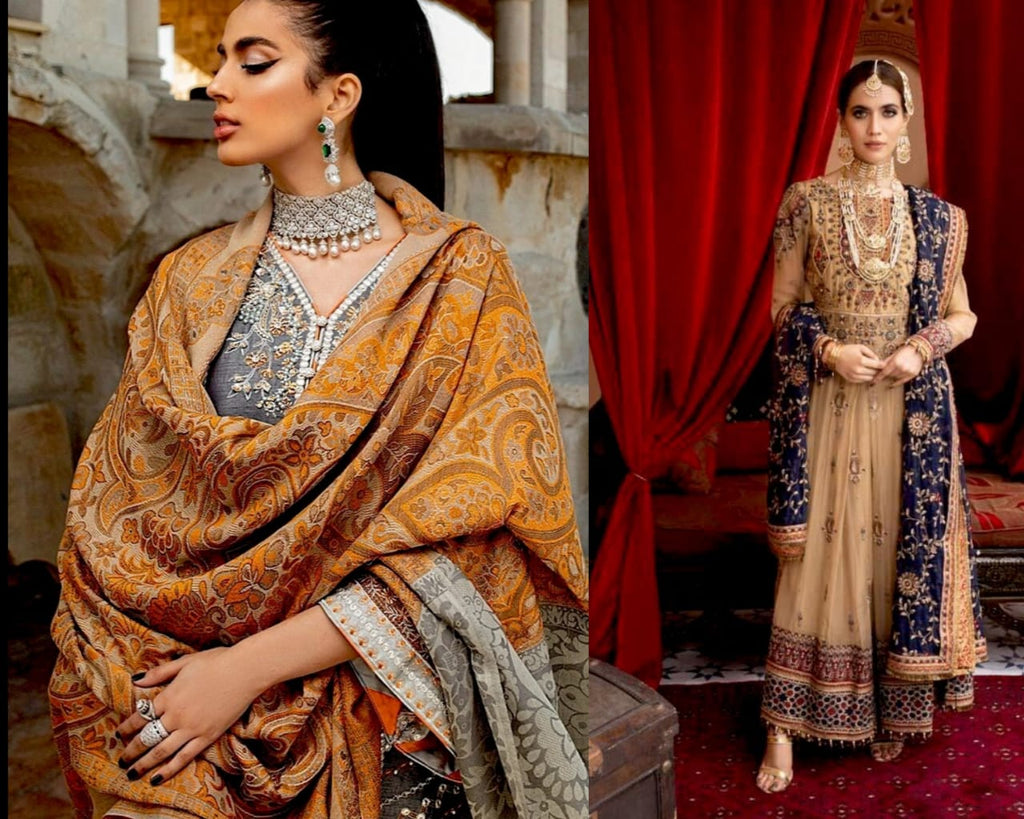4 Worth-Knowing Aspects Of Silk-licious Fabric
Posted by YOUR LIBAAS

-By Anushka Batra
Silk, a natural fibre holds the reputation of being a famous textile in high-end fashion. It is known for its luster, strength, durability, shine and elegant appearance. It gets produced from the cocoons of mulberry silkworm through a process called sericulture.
The yarns that get created from this process then get used to weaving different kinds of textiles. Whether silk is called ‘paat’, ‘pattu’ or ‘resham’, it is the strongest yet the softest natural textile in the world.
It also produces a beautiful shimmering optical effect due to the triangular prism-like structure of its fibres.
History and Origin of Silk- A Trip Down Memory Lane

The earliest trace of silk fabric got spotted in China where it was used in a child’s tomb to wrap the body. China dominated the silk industry for years. The material was meant for the emperor’s use solely and got used as a form of currency also.
Eventually, the production of this material moved to Korea, Thailand, India and Europe.
In India, the history of silk fabric dates back to the Indus Valley Civilization between 2450 BC and 2000 BC. The processing techniques like degumming and reeling for this material are taken from Chinese technology.
In India, 97% of the raw silk comes majorly from 5 states- Andhra Pradesh, Karnataka, Jammu and Kashmir, Tamil Nadu and West Bengal.
Types of Silk Fabric That Are Worth Knowing
Apart from mulberry silk which is by far the most widely produced fabric, few other types of silk fabric are worth knowing as well.
Mulberry Silk- Almost all the silk in this world is mulberry silk which is renowned for its strength, softness and durability. It is the most comfortable and least expensive type of material to make. It gets usually produced in white, yellow or greenish-yellow colour.

Eri Silk- Errandi or Endi as known in India, this textile variety is also popularly called as ‘peace silk’ because its production does not require the killing of any silkworms. It is dense and more durable than mulberry silk and has a dull yellow, gold-like sheen.
This fabric also gets called ‘castor silk’ sometimes as eri silkworms live on castor trees.

Tasar Silk- Tasar or tussar is the second most-produced type of silk fabric. It gets produced by silkworms which are native to India, and the silk that gets generated is usually green in colour. It is also known as wild silk.

Muga Silk- This material is considered as the most potent natural fibre and gets exclusively produced in Assam. The yarn is yellow. Muga silkworms are semi-domesticated, and generations of Assam residents have made this fabric for the nobility of their region.

Garad Silk- Garad originates in West Bengal and incorporates a distinctive element of the red border and small paisley motifs. Silk yarns get woven close together to impart a beautiful texture to Garad sarees.

Dharamavaram Silk- This textile variant originates from Andhra Pradesh and is known for its gold-plated borders. It is also called ‘silk for the bride’ due to its beautiful texture.

Variety and Uses of Silk

Apparel production is the most common consumer application of silk fabric. This material has gotten prized for thousands of years for its incredible soft attributes and other features.
It is mainly used in the making of bridal sarees and lehengas because the long floats of yarns create a perfect dressy and lustrous appearance. Silk kurtas, anarkalis and bottom wears also look great in every season.
Apart from garments, silk also gets used in making of ties, scarves, bedding, upholstery, wall hangings and what not.
The material’s strength allows the making of tightly woven patterns. On top of it, the fabric’s beautiful vibrant colours and durability makes it perfect for getting used in unexpected ways.
How to Take Care of Silk Fabric?

- Usually, silk is best washed by hand with a mild detergent.
- You can rinse it thoroughly, squeeze out the extra moisture by rolling in a towel and hang to dry.
- Never soak, boil, bleach, wring or leave silk crumpled in a sheet.
- It’s preferable not to leave the fabric under direct sunlight or rub it too hard because that might damage the material.
- Make sure to go to a dry-cleaner for getting any stains removed instead of using a stain-remover yourself at home.
If you are looking for a fabric that has a beautiful drape, porous nature, high elasticity and flattering sheen, then silk is a match made in heaven for you. Guess who is available to make you meet your match in no time? Yourlibaas, with its abundant silk ethnic wear, is at your service, ladies.
So, stop wasting your time on dating profiles and log into Yourlibaas immediately.
Posted on 20th June, 2021 at YourLibaas
About Anushka Batra
Anushka Batra is a recent graduate of Lady Shri Ram College, Delhi University. She has done her undergraduate education in B.A (Hons) Journalism. She is currently working at ‘Newzera’, a platform committed to inform, engage, entertain and inspire with quality content.
With experience in writing for radio stations like 92.7 BIG FM and top portals, Anushka has helped companies address prospects and customers for a new generation of marketing. She is also one of the creators of a sex-education page on Instagram called ‘Sex-hit Mein Jaari’.
Anushka is devoted to helping companies tell their unique stories. Not just selling their products, but engaging their audience by delivering content that solves problems.
Connect with her: Facebook
